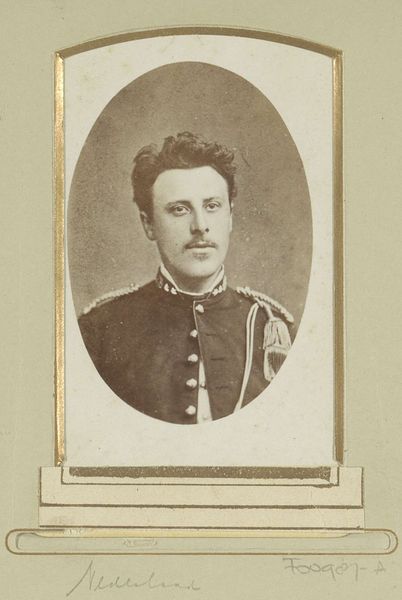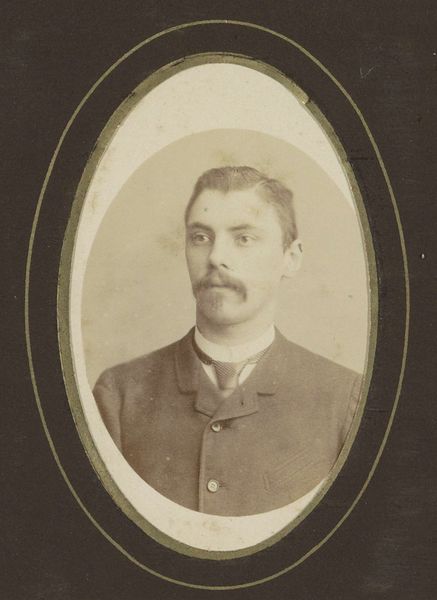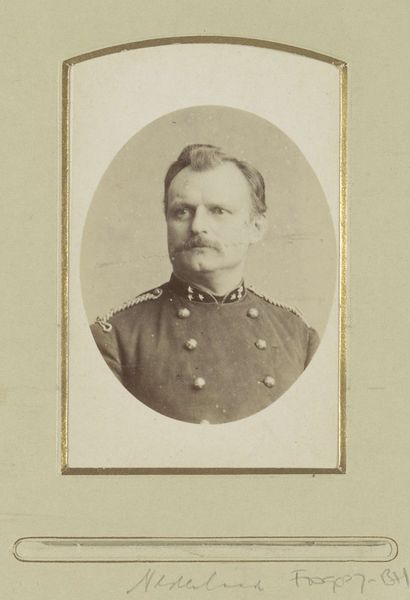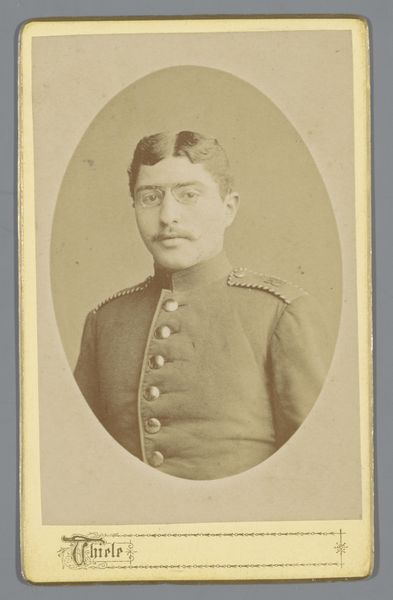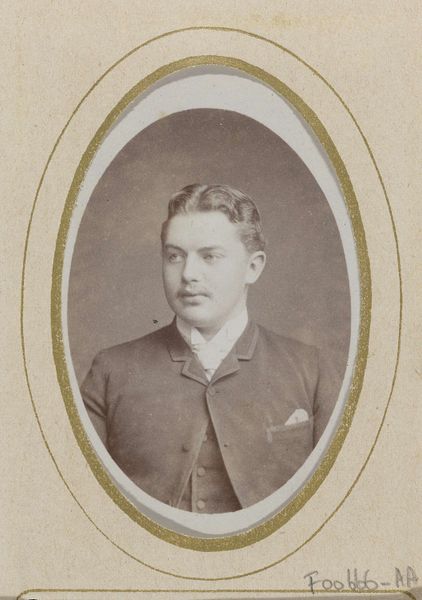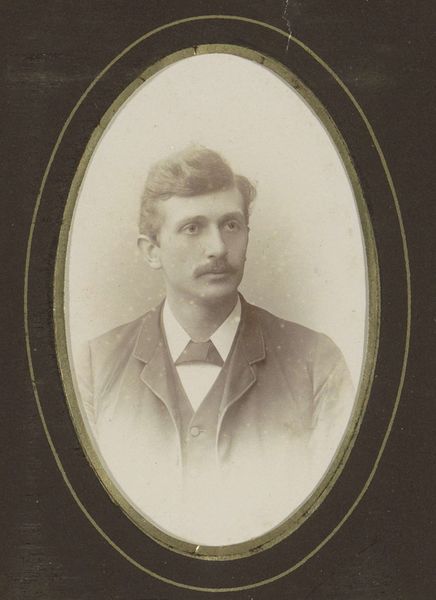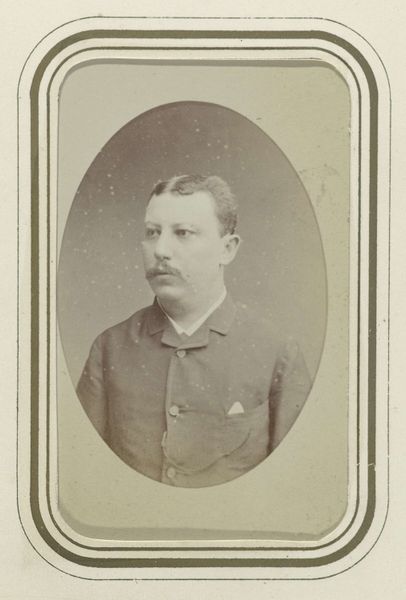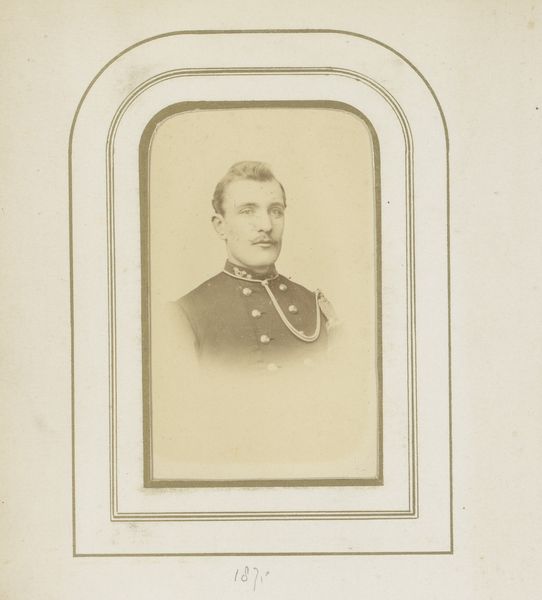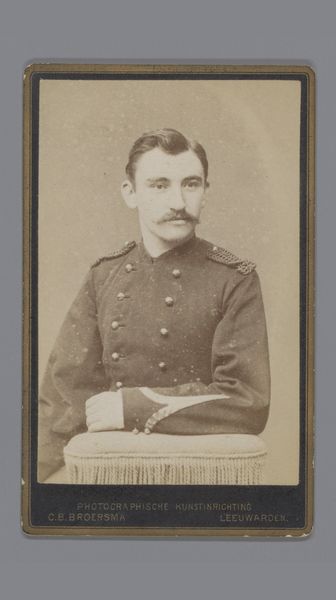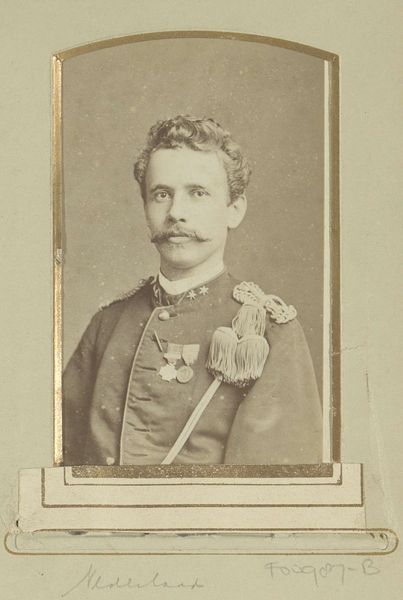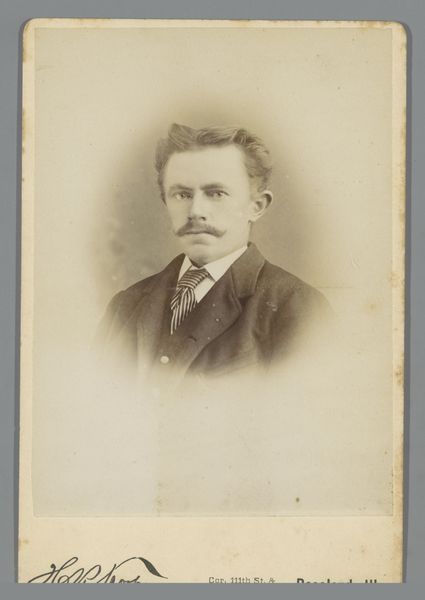
photography
#
portrait
#
photography
#
academic-art
Dimensions: height 83 mm, width 52 mm
Copyright: Rijks Museum: Open Domain
Curator: This striking photographic portrait, dating from around 1860 to 1905, is attributed to Jan Goedeljee. Titled "Portret van een jonge man in uniform," it immediately evokes a particular era. What are your first impressions? Editor: There's a formality to it, of course, a stillness typical of early photography. But what resonates most is the melancholy. His eyes, despite their sharpness, convey a quiet sadness, like he is weighed down by a sense of duty. Curator: The uniform plays a critical role, instantly communicating societal structures of power, national identity and the burden of expectations placed upon young men of that period. These portraits offered both personal keepsakes, and promoted social cohesion in an age of dramatic political change. Editor: Absolutely, and consider the deliberate arrangement: the crisp tailoring of the jacket, each button perfectly placed, contrasted against the softer edges of his face and hair. The oval frame too reinforces a sense of romantic, even idealized masculinity—a visual shorthand for an honorable life of service. The stars on the collar are a bit mysterious. Curator: We can view those as signifiers of aspiration and upward mobility within a clearly hierarchical system. This portrait speaks to the rigid social expectations inherent within militaristic societies, the visual presentation creating not merely an individual, but the embodiment of civic duty. How are those symbolized values echoed through the generations? Editor: You see traces of that same symbolic language echoed even now in modern portraiture when trying to represent trustworthiness, just tweaked with modern sensitivities. Consider those sharp lines around the jaw – we know they had to hold still for an extremely long time to create this photo! I'm guessing for his loved ones this picture held complex memories; bravery maybe mingled with an understanding of human frailty in the face of inevitable mortality. It's poignant, really. Curator: Poignant, indeed. It serves as both historical record and an emotional testament; that even within the structures of social representation, personal narratives find expression. Editor: Exactly, offering us a layered reading between visual symbol, history and an enduring story of an individual, his place in his community, his feelings.
Comments
No comments
Be the first to comment and join the conversation on the ultimate creative platform.

